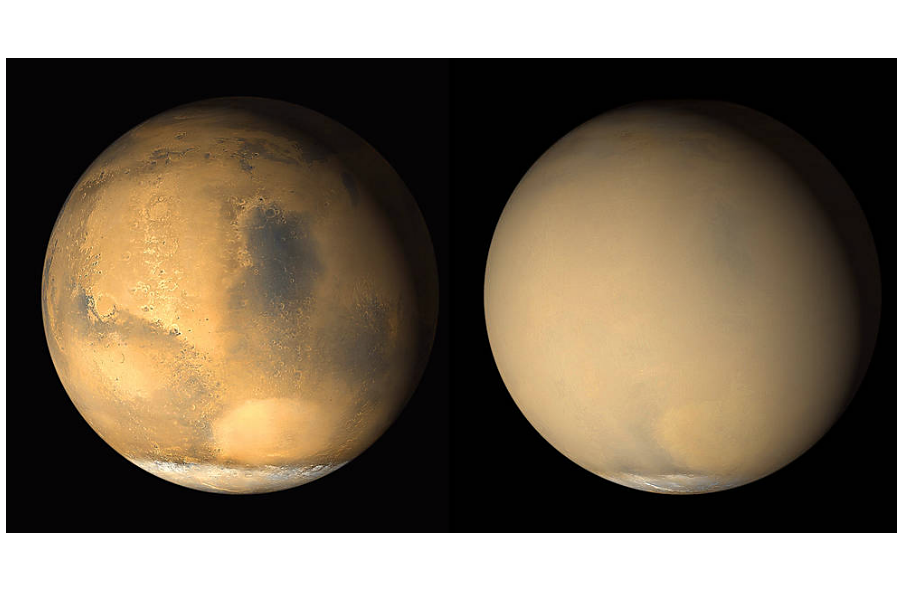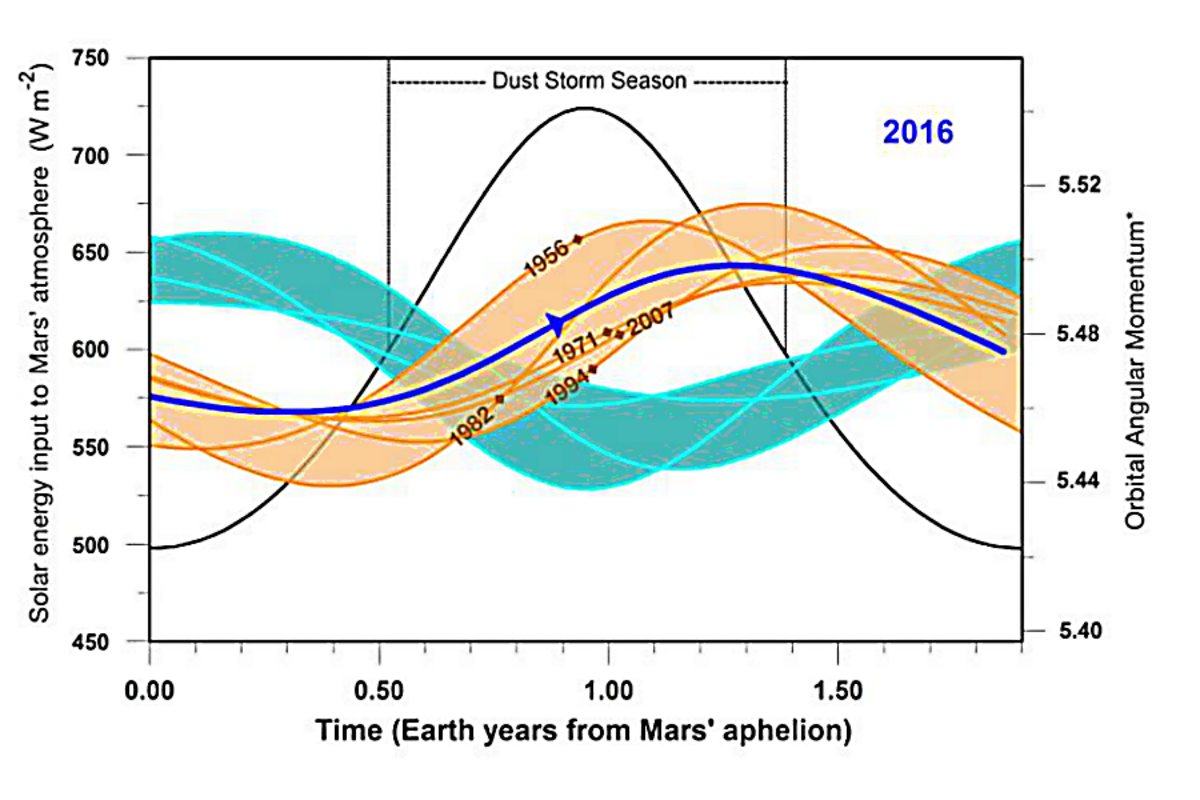Is Mars about to be enshrouded by a global dust storm?
Loading...
Much like meteorologists predict weather on Earth, planetary scientists are getting better at anticipating massive dust storms on Mars. And they say the next one will happen soon.
"Mars will reach the midpoint of its current dust storm season on October 29th of this year. Based on the historical pattern we found, we believe it is very likely that a global dust storm will begin within a few weeks or months of this date," James Shirley, a planetary scientist at NASA's Jet Propulsion Laboratory in Pasadena, Calif., said in a NASA press release on October 5.
If the global dust storm does hit as predicted, it could block out the solar energy powering NASA's Opportunity rover, and shroud the planet from the view of the orbiting spacecraft too. Dust storms are common across Mars all year round. Those common dust storms are small, local events. But sometimes they merge or grow to form larger, regional storms. And occasionally these storms become global, enshrouding much of the planet with dust.
Just as some storm systems are more frequent during different season on Earth, these larger regional dust storms tend to appear when Mars is closest to the sun, during what is spring and summer for the southern hemisphere of the Red Planet.
Mr. Shirley has studied the patterns of when these larger dust storms form on Mars in an effort to anticipate them. His work, published in 2015 in the journal Icarus, suggests the next global storm will envelop the Red Planet within the next month.
Honing this ability to predict the weather on Mars could help space agencies better plan future missions, perhaps even missions that include landing humans on the Red Planet.
Not only would the air be chokingly full of dust, during such a storm, it also could limit the amount of solar energy available to power vital electronics.
Scientists have already seen how these storms can affect exploratory missions. The last global dust storm occurred in 2007, when two NASA Mars rovers were active, one on either side of the planet.
"The global dust storm in 2007 was the first major threat to the rovers since landing," John Callas, project manager for the Spirit and Opportunity rovers, said in the press release. "We had to take special measures to enable their survival for several weeks with little sunlight to keep them powered. Each rover powered up only a few minutes each day, enough to warm them up, then shut down to the next day without even communicating with Earth. For many days during the worst of the storm, the rovers were completely on their own."
Scientists have observed nine different occurrences of global dust storms since 1924 and suspect there were more that went undetected when certain observatory technologies were not in use.
Shirley's research describes a pattern of global dust storms occurring at a sweet spot of two solar system cycles: Mars's orbit and the effect of other planets on the Red Planet's momentum.
As Mars orbits the gravitational center of the solar system, other planets cause its momentum to carry on a cycle of about 2.2 years. Meanwhile, Mars completes an orbit about every 1.9 years. Shirley found that it is when the momentum is increasing during the dust storm season (when Mars is closest to the sun, which is during the southern spring and summer), that the dust storms can become global.
Shirley's predictions will be put to the test as astronomers keep a close eye on conditions on the Red Planet over the next few months.
[Editor's note: An earlier version suggested that NASA's Curiosity Mars rover runs on solar power. It is actually the first nuclear powered Mars rover.]









